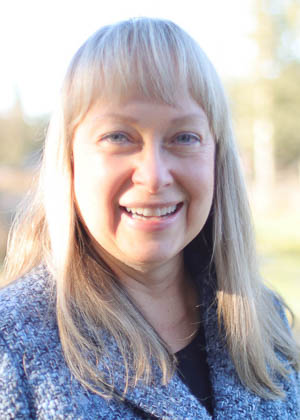by Gila Hayes
I’ve long been interested in how hard it is to objectively listen to different beliefs held by others. It’s even more challenging when people within our own circle hold opinions and beliefs opposite our own.
A few years ago Pacific Standard Magazine reported on a study into why people show so little interest in the reasoning behind opinions that differ from their own. “The researchers found participants avoided hearing out the other side for two basic reasons. They feared doing so ‘would create cognitive dissonance’ — the psychological discomfort that arises from simultaneously holding two opposing beliefs. And they felt it would...disrupt the comforting delusion that we hold similar values.”
I dug up that study after reading a recent column in Firearms Marketing Group Publications’ Inside News in which the editor of GUNS Magazine, argued that the media darlings who speak out in favor of “reasonable” gun restrictions while claiming to support the Second Amendment are traitors, pure and simple. “We need to raise a hue and cry among the ‘real’ responsible gun owners to challenge these so-called ‘friends’ whenever they pop up in the media, during political debate or when they are fundraising,” editor Brent Wheat urged. We should, he wrote, educate the misinformed, and correct without fail the many lies told to support political anti-gun agendas. He’s right and the underlying challenge, as identified by the research I mentioned at the beginning, is how to effectively communicate about heavily sensationalized and highly emotional issues.
We explore some unusually wide differences of opinion in this edition of our online journal as the Attorney Question column considers varied viewpoints about licensing concealed carry. In that column, our affiliated attorney Edward Zohn, who hails from New Jersey, speaks from his personal perspective: “I have lived in cities and suburbs and smaller towns throughout my 65 years, including New York, Chicago, Pittsburgh, Philadelphia. I have never, I repeat, never, been in a situation where a concealed firearm would have helped me or held any advantage.” He adds, “Some in the movement may think, incorrectly, that these views are ‘anti-gun’ and that I sold out.”
Network members include people who have indeed been attacked with such inescapable violence that they have shot their attacker to avoid being killed or crippled themselves; we have members who have displayed a weapon (defensive display) to communicate, “Stop! Do not harm us,” others have extracted themselves quietly and carefully from situations before things turned violent. They were capable of fighting back but were smart and saw danger far enough in advance to avoid it. Finally, I suspect, a good number of members, practice caution to avoid risks, and while possessing the ability to respond with deadly force, have never come close to needing to use it.
How, then, do members across such a widely-varied spectrum present a cohesive front against a power-mad government bent on removing our means of defense?
In correspondence with Edward Zohn while working on this month’s column, I commented that I can’t relate experientially with his viewpoint. He urged, “There are many suburban and exurban liberals like me who favor gun ownership but are very wary of the ‘all guns, all the time mindset.’ The pro-gun community cannot be one size fits all, or it will wither and start racking up legislative losses.” If you haven’t already done so, please read our affiliated attorneys’ thoughts on permitless concealed carry in the Attorney Question of the Month column.
I often try to figure out the mindset of people and organizations who make the dual claim to support the Second Amendment and to promote “reasonable gun restrictions.” Most lose me by parroting the nonsensical term “gun violence.” Inaccurately attributing the ability to do violence to an inanimate piece of machinery reeks of lies and manipulation that make my blood boil. If guns were capable of violence, surely the ones on my house these many decades would have risen up but it has never happened, nor have I even seen a firearm move from its shelf in the gun safe or the holster all on its own. Have you?
Meanwhile, the Journal of the American Medical Association is again pursuing its own disinformation campaign. They’ve published an analysis attempting to link Stand Your Ground laws to increases in homicides. Claiming a 30% “upsurge” in “homicide and firearm homicide” in 2020 without acknowledging, as did a Pew Research Center study into the increase in homicides, “the economic and societal changes brought on by the coronavirus pandemic and changes in police-community relations after the murder of George Floyd in Minnesota last year,” although Pew Research Center, which I’d thought reasonably even-handed, opined that “the exact reasons remain unclear.”
The American Medical Association, though, enthusiastically played the race card, quoting critics who claim self-defense laws harm ethnic minorities and “exacerbate social inequalities in experiencing violent crime, since implicit and explicit biases of threat perception discriminate against and cause disproportionate harms among minority groups, such as Black people.” This they boldly claim, despite admitting that according to their data crunching, “No statistically significant differences by race, age group, or sex of individuals who died by homicide were identified. However, stratified models showed more pronounced increases in some demographic groups. The largest increases were seen for White individuals and for males.” That must have been a confusing outcome for the AMA’s vaunted “analysts.”
The thing that confounds me most is a medical association blaming increasing homicide rates on laws that acknowledge Americans’ rights to defend themselves against homicidal attack. The AMA’s study refuses to recognize concurrent upticks in crime that expose honest, decent citizens to predators they’d ordinarily be buffered from if prison sentences were not cut short at the same time cities defunded our police. I wish the AMA would devote its energy to curing cancer and diabetes, genuinely curbing the novel coronavirus and addressing life saving breakthroughs to save victims of heart attack, stroke and injuries suffered in accidents.
To read more of this month's journal, please click here.

